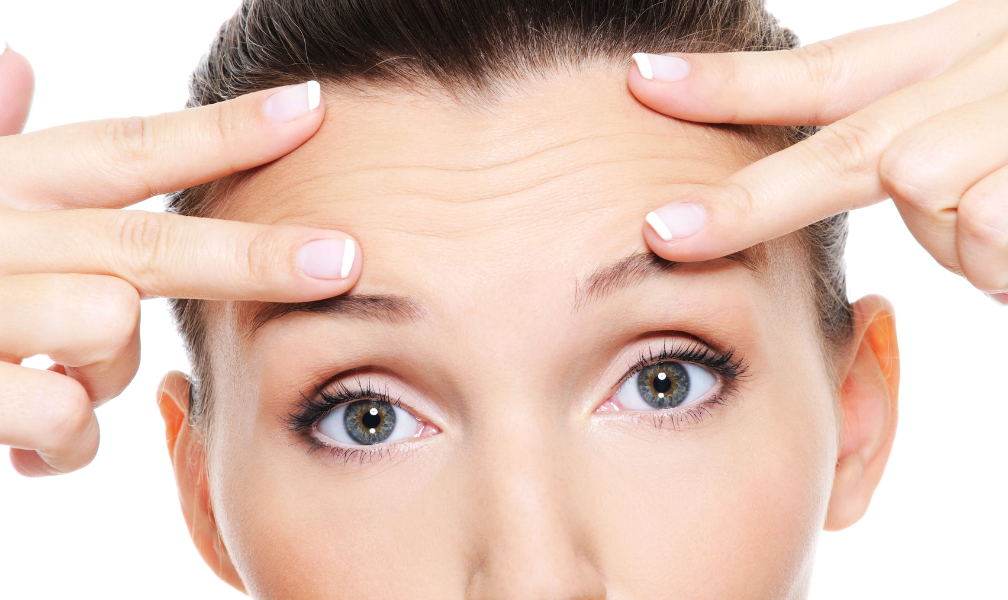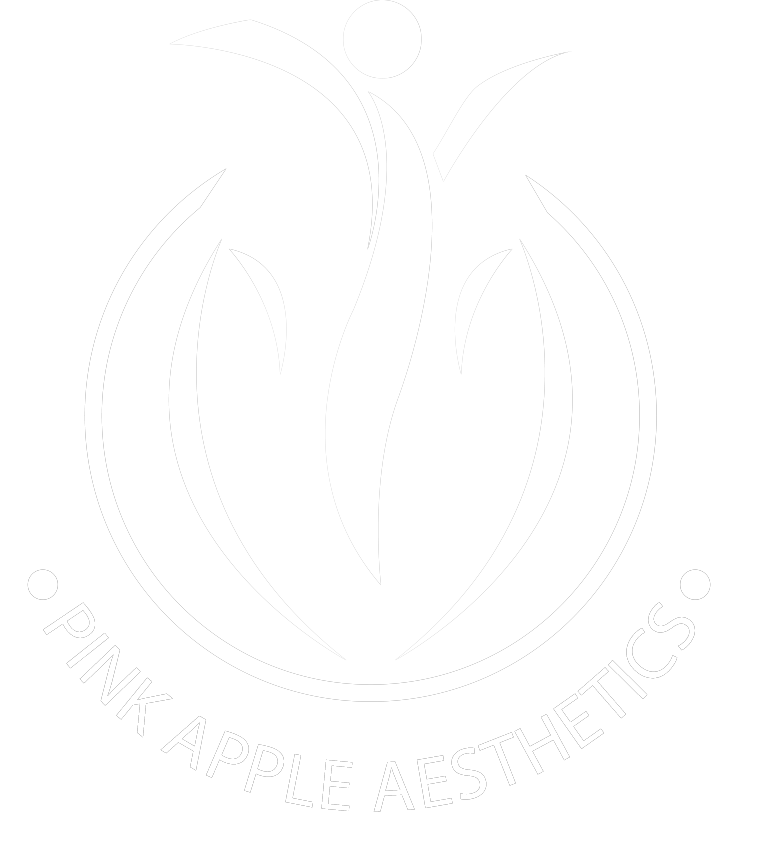
1) Are dermal fillers used for forehead rejuvenation?
Dermal fillers are a safe and effective treatment for filling out the lines and wrinkles on the forehead. Dermal fillers like Hyaluronic acid (HA), Collagen; Polymethyl methacrylate (PMMA) are gel-based solutions that are injected into the skin through a needle or cannula. Forehead rejuvenation using this method can see results immediately and this can last for at least twelve months. Dermal fillers help by providing plumping effect or instant volume to fill in the static lines and deep wrinkles on the face. Dermal fillers are also commonly used to add volume to the lips and cheeks and as an effective treatment for scarring. The fillers are used on the temples as well as under the outer eyebrow to lift the brow. In forehead rejuvenation the dermal fillers can play a role in treating the vertical frown lines and are sometimes combined with Botox. Dermal fillers seem to work better when the lines are deep. The PMMA fillers are longer lasting when compared to others.
2) Can forehead rejuvenation be done with BOTOX?
Dynamic wrinkles that are a result of the facial muscles beneath the skin are most commonly found in the forehead, cheeks, the sides of the eyes, and between the eyebrows. And especially for these type of wrinkles Botox helps by working directly with the roots of a patient’s wrinkles and lines from underneath the skin. This is done when Botox weakens or relaxes the facial muscles that cause these dynamic wrinkles. Once the facial muscles become paralyzed and relax their contraction, the appearance of wrinkles and lines in the forehead disappears. The muscles around the forehead and eyes contracts most when performing facial expressions and these can be treated with Botox. Though there are other types of wrinkles caused by issues like sun damage or age-related loss of elasticity, Botox is best suitable for dynamic wrinkles. A single treatment of anti-wrinkle Botox for the forehead generally lasts anywhere from 3-5 months and in some cases even for a year.
3) How is endoscopic forehead lift different from open forehead lift?
The endoscopic technique of brow lift makes use of several smaller incisions in the scalp to tunnel beneath the forehead and ‘release’ the brows. The sagging brows along with the skin of the forehead will then be shifted upwards and resuspended without removing any skin thereby giving a more youthful appearance. Whereas in the open technique, a longer continuous incision is made across the scalp and the tissues are lifted after which the ‘frown’ muscles are weakened, and a strip of extra skin is removed in order to permanently lift the brows. This is the key difference between the two techniques. The endoscopic technique not only shifts the brows but also shifts the hairline upwards. Endoscopic Lifts have slightly quicker recovery but open techniques last longer. Of the different open techniques, the trichophytic incision is the better approach as in this the incision hugs the hairline in such a way that the hairs grow back through the scar. This can give quite natural looking results.
4) What are the reasons to opt for a forehead rejuvenation?
Our forehead is perhaps the top spot on our face that bores the brunt of aging. Frown lines can happen even in younger individuals as a result of habitual or dynamic forehead muscular hyperactivity. Without correction of this the aging face may often convey fatigue and even anger perpetually. A number of reasons can be there in order to opt for forehead rejuvenation. Some of it can include Forehead concavity when it starts to hollow in the center and this also accentuates the horizontal forehead lines and frown lines, hollow temples can bring the tail of the eyebrow down but it also gives an impression of a bony ridge around the eyes with the gap behind making the face wide above temples almost like a peanut head appearance. Some other commonly seen conditions can be medial brow ptosis, vertical corrugator inter-brow lines, corrugator overaction, central brow ptosis, temporal hooding secondary to brow ptosis, brow tail ptosis and rhytids, loss of brow fat pad volume, possible increase in forehead height or medial dermatochalasis upper lid.
5) What is involved in Mesolift for forehead rejuvenation?
The first signs of facial skin aging are the appearance of fine lines and wrinkles and the loss of elasticity in the skin. As time progresses the wrinkles deepen and the skin begins to sag. Mesolifting recovers tension and vitality lost by your skin and creates a lifting effect. Treatment of mesolift or facial mesotherapy slows or even reverses the time-dependent changes in the skin. The mesolifting method of forehead rejuvenation involves microinjections of natural substances into the skin that allow tissue regeneration in the upper and lower layers of the skin and in the following sessions the middle layer will be lifted and then wrinkles filled out. A mesolift method of rejuvenating will make the skin look younger, lively and healthier than it is. Mesolift can be done manually, but also can be done with the gun system, which can be adjusted up to 200 injections per minute and can be adjusted with depth and pressure. The solution injected is a combination of many vitamins, minerals, amino acids, enzymes, and hyaluronic acids. The frequency of the application varies by every patient, between 10-15 days with two or three sessions at the beginning.
6) Can laser resurfacing therapy be done in forehead rejuvenation?
Rejuvenation by laser resurfacing is a preferred choice when people want their forehead wrinkles and skin imperfections reduced in no time. Sun damage, fine lines or wrinkles, skin laxity, brown spots, blotchiness, scars and certain precancerous growths can all be easily remedied with laser skin resurfacing. The laser resurfacing technique directs short, concentrated pulsating beams of light at irregular skin thereby precisely removing the skin layer by layer. This procedure is also called lasabrasion, laser peel, or laser vaporization. If a patient has fine lines or wrinkles around the eyes or mouth or on the forehead, shallow scars from acne, or non-responsive skin after a facelift, then they are a good candidate for laser skin resurfacing. Since every skin is different to know whether laser resurfacing is the right treatment option, a doctor has to be consulted before the procedure is done. The two types of lasers most commonly used in laser resurfacing are carbon dioxide (CO2) and erbium.
7) What is involved in the recovery period after forehead lift?
When talking about recovery form forehead rejuvenation this can include a combination of various treatment procedures and each of this has different recovery periods and this varies from person to person. In the case of a forehead lift recovery normally takes 2-3 weeks. Most people are able to return to work after 2 weeks. There is usually some degree of bruising and swelling and a cold compress can be applied to minimize this. After any such procedures it is advisable to keep the head elevated when lying down and every activity should be kept at a minimum. The results of the brow lift can take about 3 months to show, but further changes may take place as the brows settle into the new position. The recovery does involve a mild degree of pain, more in the form of tightness or feeling heated. In the case of a coronal lift, it might take up to two weeks for the patient to be up and running. After any of these procedures the forehead may be taped and the head may be wrapped to minimize swelling and bruising. After surgery there can be thin drains in place to remove any excess blood or fluid.
8) What are the different cosmetic procedures included in forehead rejuvenation?
For quite a long time now forehead rejuvenation has centered on surgical approaches, such as the forehead lift, brow lift, and browpexy. Some of the top reasons to go in for a forehead rejuvenation can be a brow descent, forehead creases, glabellar wrinkles, and furrows as all of this can produce a forever tired appearance. A number of cosmetic procedures or a combination of them can be used to address these issues. The complete rejuvenation of the periorbital region requires consideration and management of brow ptosis. When combined with blepharoplasty, forehead plasty (brow lifting) the rejuvenation of the upper third of the face can be completed. As with all surgical procedures different technique are used by the surgeons in order to accommodate each individual patient’s needs. Mini-incision surgeries with and without endoscopic assist are quite popular for its quick results though the gold standard for forehead plasty is always the open approach. Unlike in the case of face lifts, a secondary forehead plasty will rarely be required.
9) What are some after-care tips following forehead rejuvenation?
As with any cosmetic procedure the final outcome is always dependent on the post-op aftercare. Some tips to ensure that the healing and recovery produces long-lasting results can include not smoking for at least 24-36 hours, not consuming any alcohol consumption for 24 hours before treatment and 24 hours post-procedure. Any sort of exercise is advised against. Avoid using any make-up or skincare product or even direct sun exposure. Facial cleansing wipes can be used to clean the face by avoiding the treated area and ensure to not touch or massage the injected area. Applying a cool compress to injected sites for five minutes up to four times a day can provide some relief. Restrict facial movements where possible for up to 1-3 weeks post-procedure. Remember to sleep in an upright position, with the face-up, to help reduce any swelling. No other chemical treatments must be done on the face at least for 4 weeks after the procedure. Excessive heat or hot showers will need to be avoided for the first 48 hours.
10) How long do the results of a brow lift last?
When it comes to the results of forehead rejuvenation, the thing to remember is that no procedure can stop time or the natural aging process. A significant change will be seen right away, but it’ll take longer to see the final results. It can take a few weeks for the swelling to go down and up to six months for all the swelling to resolve. The results after the healing period should ideally last many years maybe even for a decade. Sagging skin and other signs of aging can be minimized by regularly using medical-grade skin care and sunscreen with an SPF of 30 or higher, and by occasionally having cosmetic procedures like Ultherapy and microneedling with radiofrequency energy, to boost collagen production and to give a tightening of skin effect. When forehead rejuvenation is combines with other facial rejuvenation procedures then recovery will take longer and thus results will also only manifest after some time period. A cosmetic specialist can help you to determine the right follow-up schedule in order to experience consistent results. The longer the muscles are kept relaxed, the better the appearance of those lines will be.
For Enquiries and Online Appointments
For more detailed information about Forehead Rejuvenation, please send us a message today.

